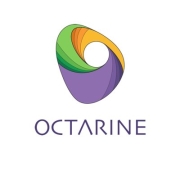Container Security ensures the protection of software containers from threats and vulnerabilities. By securing the containerization process, organizations can maintain robust, scalable, and reliable application performance.
Container Security focuses on the challenges of securing containerized environments. It involves various strategies such as vulnerability scanning, access controls, and runtime protection. Solutions in this space cater to identifying and mitigating risks specific to containers, thereby enhancing overall security posture.
What are the critical features to look for?
What benefits or ROI should users evaluate?
Container Security is implemented in industries such as finance, healthcare, and technology, where data integrity and security are paramount. These sectors benefit significantly by integrating robust security measures specifically designed for containerized applications.
Organizations benefit from Container Security by gaining confidence in their containerized environments. Ensuring secure deployment and operation of containers is crucial for maintaining seamless and reliable application performance.
| Product | Market Share (%) |
|---|---|
| Wiz | 15.7% |
| Prisma Cloud by Palo Alto Networks | 10.6% |
| Microsoft Defender for Cloud | 6.6% |
| Other | 67.1% |









































































For a container or any program to be functional on even a basic level, definitions must be built into the system. Containers utilize what are called “container images” to conform with this need. These so-called images define for the program all the elements that allow technological environments to work properly. These images are essentially what allow applications to carry out those functions which make the application necessary to begin with.
Container images create what one might consider a directory of terms within the program. The addition of this directory enables a system to know how it is supposed to react to specific situations. It is essential that this list of responsibilities is safeguarded. If they are left exposed, then any sort of instructions could be included in the system's operating instructions. How a system responds to situations and instructions is tied directly to the nature of the images that are incorporated into it.
It is a fact that the world is growing exponentially ever more reliant on computers and software applications in order to operate. Therefore, it is important to think about whether our systems can be secured from a list of cyber threats that grows more sophisticated by the day. Container security is any series of procedures which is aimed at protecting an application’s containers from harm. When it comes down to it, like everything else in the tech world, container security relies on proper implementation of protocols. Container security employs a wide variety of protocols to ensure that containers have not been corrupted or otherwise influenced by malware and viruses.
Much time has been spent trying to keep up with changing threats to cyber security. Protocols are forced to adjust to ever changing times. There is no point at which container security is fixed. The process and adjustments that are made are continuous and ongoing. It is also ultimately automated in a way where it integrates into the very environment that it aims to secure. This process of combining the automated security with the software gives you a greater ability to protect yourself from cyber attacks.
What, if anything, makes the role of container security crucial to the world of information technology? It has been established that containers are a piece of software that allows applications to function in tandem with platforms that they might not otherwise be able to work with. That being the case, it is worthwhile to consider the complexity of the issues at play. There could be a malicious actor or competitor who would like nothing better than to harm or gain an edge over you. An application or system without any security integrated into it is now dangerously vulnerable to an attack. Infrastructure can be compromised and infiltrated to the point of collapse or slowed down to the point of ineffectiveness.
However, what if it is not in the interest of the person or group who wants to take advantage of the lack of security to slow the system down or crash it? Their goal may be to steal data, spy, or act in otherwise subtle ways to accomplish their goals. It is not only the hazards of a deliberate attack that one must worry about. Any lapse in the security protocols on the part of the team responsible for its upkeep can lead your containers to interacting poorly with other containers. This can impact performance even though nothing malicious was intended.
To secure a container, an organization will want to make certain that several factors are considered:
1. They will want to make certain that the container images that define the system are from a trusted source and free of anything which could harm the application. Not doing so could mean that their application will be defined by code which could do them harm.
2. The application should run encryptions to protect their infrastructure when it is exposed to other networks. The nature of containers is such that they are supposed to come into contact with other systems. If they do so and the containers are exposed to malicious code, then any and all information is at risk. Data can be stolen and the system can be compromised.
3. Resources that are allocated should be tightly regulated by configuring the containers to run in a precise manner. The more precise the allocation of resources for a given application, the more effectively it will be able to do its job. Additionally, any breach that happens cannot be exploited in a way which will be critically damaging. Therefore, your last line of defense is to make certain that any intrusion into the system cannot spread to take control of other resources within the system.
These steps can help secure applications and the containers that run on them. Containers which have been secured using these types of methods will function in the best possible way.
This list is far from exhaustive. Taking all available measures to protect your application and containers will provide many benefits, which will be outlined below.
The use of containers in applications, while useful in many ways, can be misleading. One might be led to believe that the use of containers makes an application more secure. That is not necessarily accurate. Vulnerabilities, both new and old, can still exist within the application even after containers are employed. It is possible for teams to get complacent and rely on automation alone to find the vulnerabilities. While containers are a useful tool, they do not necessarily resolve issues of security on their own.
Container security software is designed to protect the integrity and security of containerized applications and the underlying infrastructure. As containers become increasingly popular for deploying and managing applications, the need for robust container security solutions has also grown. Here are some of the different types of container security software available in the market today:
1. Vulnerability scanning tools: These tools scan container images and identify any known vulnerabilities in the software packages and libraries used within the container. They provide insights into potential security risks and help developers and administrators take necessary actions to mitigate them.
2. Runtime security tools: Runtime security tools monitor containerized applications while they are running, detecting and preventing any malicious activities or unauthorized access attempts. They can enforce security policies, detect anomalies, and provide real-time alerts to ensure the security of the container environment.
3. Image scanning tools: Image scanning tools analyze container images for security vulnerabilities, misconfigurations, and compliance issues. They help ensure that only secure and compliant container images are deployed, reducing the risk of security breaches.
4. Access control and authentication tools: These tools manage user access to containerized applications and ensure that only authorized users can interact with the containers. They provide authentication and authorization mechanisms, such as multi-factor authentication, role-based access control, and integration with identity and access management systems.
5. Encryption and secrets management tools: Encryption tools help protect sensitive data within containers by encrypting it at rest and in transit. Secrets management tools securely store and manage sensitive information, such as API keys, passwords, and certificates, used by containerized applications, reducing the risk of unauthorized access.
6. Compliance and auditing tools: Compliance and auditing tools help organizations ensure that their container environments adhere to industry regulations and internal security policies. They provide visibility into container activities, generate audit logs, and facilitate compliance reporting.
7. Network security tools: Network security tools protect containerized applications from network-based attacks. They monitor network traffic, detect and prevent malicious activities, and enforce network segmentation and isolation to minimize the attack surface.
8. Container orchestration platform security features: Container orchestration platforms, such as Kubernetes, often provide built-in security features. These include features like role-based access control, network policies, pod security policies, and secure container runtime environments, which help secure the overall container environment.
Implementing strong Container Security involves several best practices. Always use trusted images from reputable sources and regularly scan them for vulnerabilities. Employ the principle of least privilege, ensuring containers run with minimal permissions. Segregate applications using namespaces and control network traffic with network policies. Regularly update and patch container runtimes and efficiently manage secrets. Enforce security policies with tools like Kubernetes Pod Security Policies and monitor runtime behavior for anomalies.
How do you manage secrets in containerized environments?Managing secrets in containerized environments requires tools designed for secure storage and access. Avoid hardcoding secrets in images or passing them via environment variables. Use solutions like Kubernetes Secrets, HashiCorp Vault, or AWS Secrets Manager. These tools allow you to store, rotate, and manage access to sensitive information securely. Ensure that secrets are encrypted at rest and in transit, and implement access controls to restrict who and what can access these secrets.
What is container image scanning and why is it important?Container image scanning involves examining container images for vulnerabilities, malware, and misconfigurations before deployment. It is crucial because it helps identify security risks early in the development process, preventing compromised images from being deployed in production. By integrating image scanning into your CI/CD pipeline, you can automate the assessment of each image, ensuring they comply with your security policies and standards. Popular tools for image scanning include Clair, Aqua, and Trivy.
How can you ensure runtime security for your containers?Ensuring runtime security for containers involves continuously monitoring and protecting containers during their execution. Use tools like Falco, Sysdig, or Aqua Security to detect suspicious activities and enforce security policies. Employ network segmentation to limit communication between containers and minimize the attack surface. Regularly update your container orchestrator, like Kubernetes, and apply security patches. Monitor container logs and set up alerts for unusual behavior, allowing for rapid incident response.
What role does Kubernetes play in Container Security?Kubernetes plays a significant role in Container Security by providing various built-in security features and configuration options. Use RBAC (Role-Based Access Control) to define permissions and restrict access. Implement Kubernetes Network Policies to control traffic flow between pods. Secure the Kubernetes API server and etcd with proper authentication and encryption. Use Pod Security Policies to enforce security standards for pod specifications. Regularly audit your cluster configuration and activity using Kubernetes audit logs.